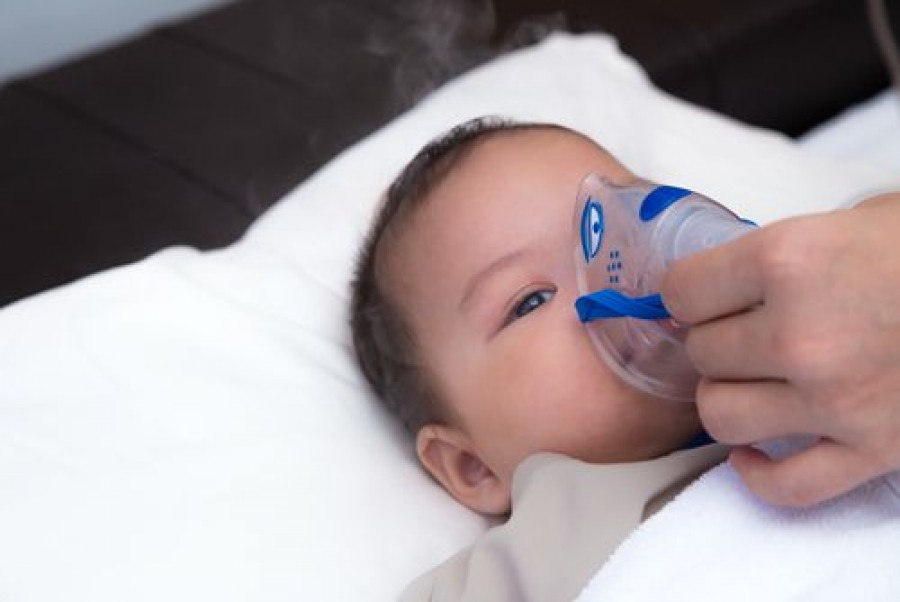Haemolytic Disease of the Newborn

While most pregnancies tend to be complication free, the amount of different problems that could occur can make pregnancy scary. Fortunately, there is generally no need to worry as most problems are either preventable, treatable, or both. One of those problems is called haemolytic disease of the newborn, also known as haemolytic disease of the foetus and newborn, HDN, HDFN, and erythroblastosis fetalis. Haemolytic disease of the newborn is a disorder of the blood where the mum’s blood and her bub’s blood are not compatible with each other. This incompatibility can cause a range of different problems for the baby if preventative measures are not taken.
The Causes of Haemolytic Disease of the Newborn
Haemolytic disease of the newborn occurs when the blood of the mother and the blood of her baby are incompatible. The baby’s blood passes to the mother through the placenta and since it is not compatible with her own blood, her body recognizes it as foreign and creates antibodies in response. The antibodies are passed through the placenta and attack the baby’s red blood cells and break them down. This can lead to severe problems for the baby. There are two different ways that a baby’s blood may be incompatible with the blood of his or her mother.
1. How Blood Type is Determined
To understand why blood incompatibility occurs between a baby and his or her mother, it’s important to first understand how blood type is determined. There are two different factors that determine blood type. The factors that determine a person’s blood type are about the antigens that exist in one’s blood. First, a person is assigned a specific letter or letters based off of what type of antigens exist in their blood. There are A antigens as well as B antigens. If a person’s blood has A antigens, they have type-A blood. If they have B antigens, they have type-B blood. If they have both A and B antigens, they have AB-type blood. If a person’s blood has neither antigen present, it is O-type blood. In addition to being assigned a letter, a person’s blood is also considered negative or positive based on their Rh factor. Rh factor is determined by the presence of or lack of Rh antigens. If a person has Rh antigens in their blood, their blood is classified as Rh positive. If they do not have the Rh antigens, their blood is considered Rh-negative.
2. Rh Incompatibility
The first, and by far most common, cause of haemolytic disease of the newborn is Rh incompatibility. This occurs when the mother has Rh-negative blood, but the baby has Rh-positive blood. This may happen when the father of the baby is Rh-positive. The mother’s body that has no Rh antigens sees the Rh antigens in the baby’s blood as foreign and creates the antibodies that attack the baby’s red blood cells. This wouldn’t happen if the mother was Rh-positive and the baby was Rh-negative, however. The reason being that the baby’s blood wouldn’t be introducing foreign antigens to the mother’s body.
3. ABO Incompatibility
While much less common than Rh incompatibility, it’s possible for haemolytic disease of the newborn to occur due to ABO incompatibility. This most commonly occurs when the mother has O-type blood and the baby has any other blood type. This is because any blood other than O-type blood would contain antigens that the mother’s body is unfamiliar with. However, it can occur if the mother has B-type blood and the baby has A-type blood, or vice versa.
Complications of Haemolytic Disease of the Newborn
When haemolytic disease of the newborn occurs, it can cause different problems for the baby. The problems may be mild, but can be so severe that death is a possibility.
1. Anemia
Haemolytic disease of the newborn can cause the baby to experience mild to severe anemia. This is because of the baby’s red blood cell count being low due to the antibodies created by the mother’s body breaking them down. The low red blood cell count makes the baby’s body unable to carry an adequate amount of oxygen to all parts of the body leading to the baby’s organs and tissue struggling.
2. Enlarged Liver and Spleen
If the baby experiences anemia due to haemolytic disease of the newborn, it can cause their liver and spleen to become enlarged. This is because the low red blood cell count in the baby’s blood causes them to try to make more red blood cells as quick as possible. This leads to the enlargement of the spleen and liver where the red blood cells are made. Making the red blood cells so quickly can also make them immature and to where they can’t function right which worsens their anemia.
3. Jaundice
When red blood cells are broken down, it causes the creation of a substance called bilirubin. This substance isn’t easy for the baby to get rid of and can therefore build up in his or her blood causing jaundice. Jaundice can cause your baby’s skin and eyes to have a yellow tinge to them. It can also cause pain, sickness, fever, itching, and fatigue.
4. Kernicterus
Since haemolytic disease of the newborn can cause build-up of the substance bilirubin, kernicterus can be a complication related to haemolytic disease of the newborn. When the levels of bilirubin in your baby’s blood become extremely high, the bilirubin can end up in the brain which can lead to severe permanent brain damage.
5. Hydrops Fetalis
Hydrops fetalis is a severe condition that can come from haemolytic disease of the newborn. It happens when the anemia is no longer able to be handled by the baby leading to the buildup of fluids throughout the baby’s body and to heart failure of the baby. It is potentially fatal.
Prevention of Haemolytic Disease of the Newborn
Fortunately, haemolytic disease of the newborn is not very common largely in thanks to simple and easy preventative measures that can be taken during pregnancy. If a mother is Rh-negative, it will almost always be identified early on in her pregnancy during routine blood testing. A woman with Rh negative blood can then be given Rh immunoglobulin which is a product that prevents the mother’s body from reacting to her baby’s foreign Rh-positive blood.
Treatment of Haemolytic Disease of the Newborn
If haemolytic disease of the newborn occurs, there are a variety of treatment options that may be used depending on the security of the disease.
1. Phototherapy
One thing that may be used in the treatment of haemolytic disease of the newborn is phototherapy. The purpose of this is to help reduce the levels of bilirubin in the baby’s blood. Phototherapy consists of exposing the baby to a type of fluorescent light to be absorbed by the baby’s skin.
2. Breathing Help
A baby suffering from haemolytic disease of the newborn may require some assistance with breathing. The baby may simply receive oxygen or may be put on a mechanical breathing machine.
3. Intravenous Fluids
In addition to other forms of treatment, a baby suffering from haemolytic disease of the newborn may receive an IV with fluids to help keep them stable.
4. Blood Transfusion
Often, the treatment of a baby with haemolytic disease of the newborn will include a blood transfusion. This is where the baby receives healthy blood from a donor to help make up for the damaged blood that they have.
5. Blood Exchange Transfusion
If a baby is suffering from a very severe case of haemolytic disease of the newborn, they may require a blood exchange transfusion. This is where the baby’s damaged blood is replaced with healthy blood.
Rest Assured
The possibility of haemolytic disease of the newborn can be a frightening thought and may cause you to worry, but you shouldn’t allow it to cause you stress. It’s not terribly common and is even less common now due to easy preventative methods. If it’s a concern of yours, you can always talk to your pregnancy health care provider about your blood type and if your baby is at risk. Learning about the prevention and treatment of haemolytic disease of the newborn should help to ease your worries. If you are faced with haemolytic disease of the newborn, educate yourself as much as possible and trust the advice of your health care providers.


